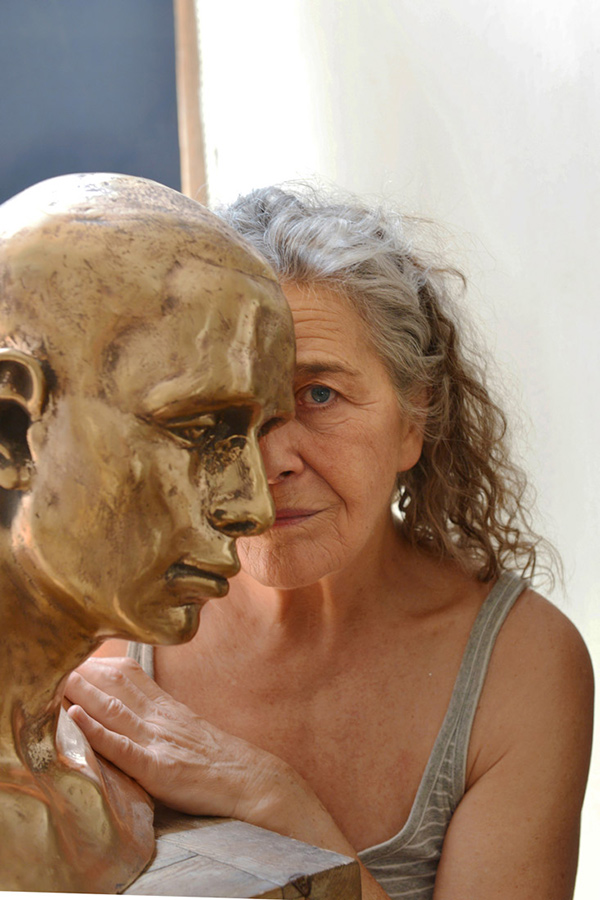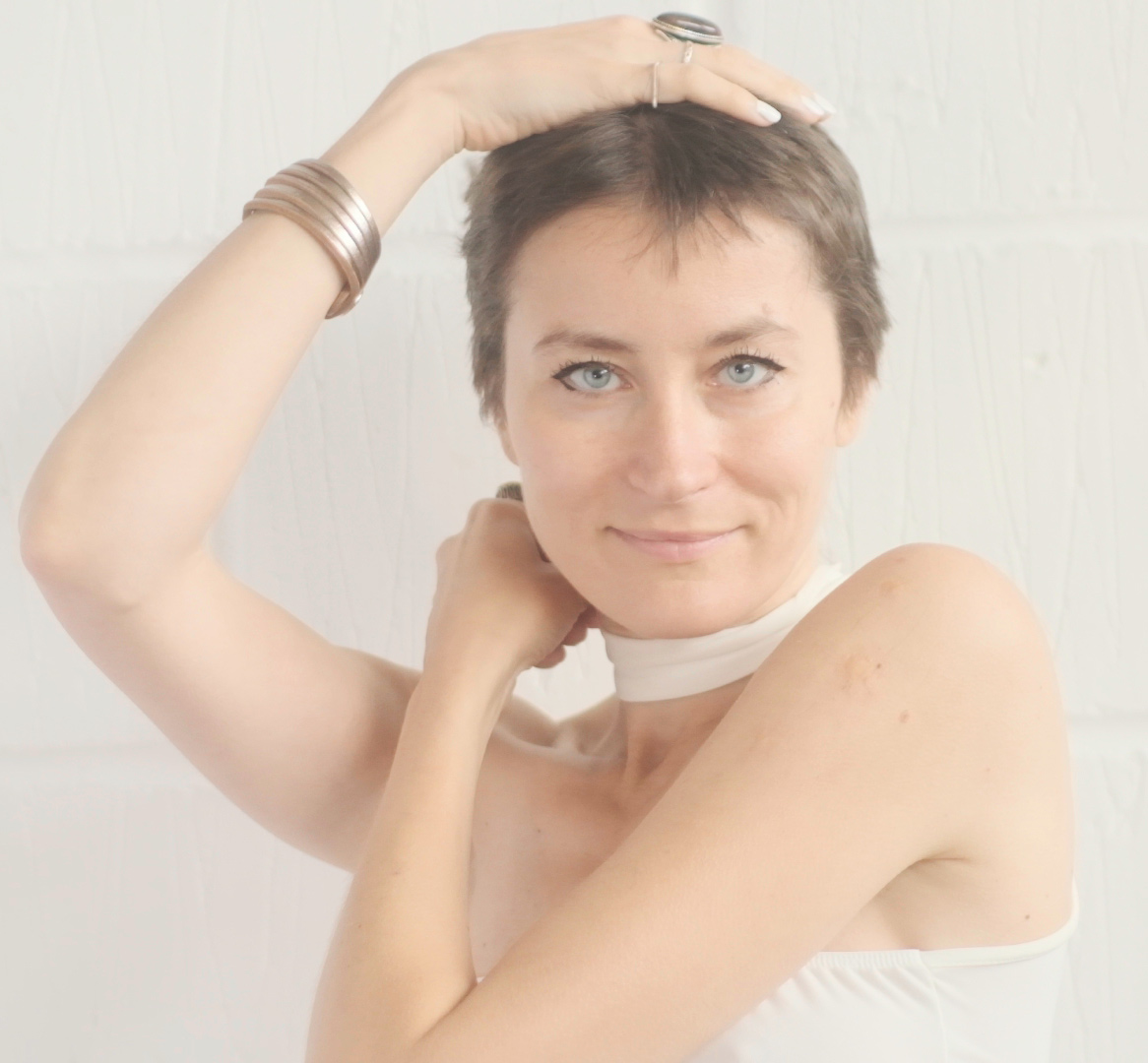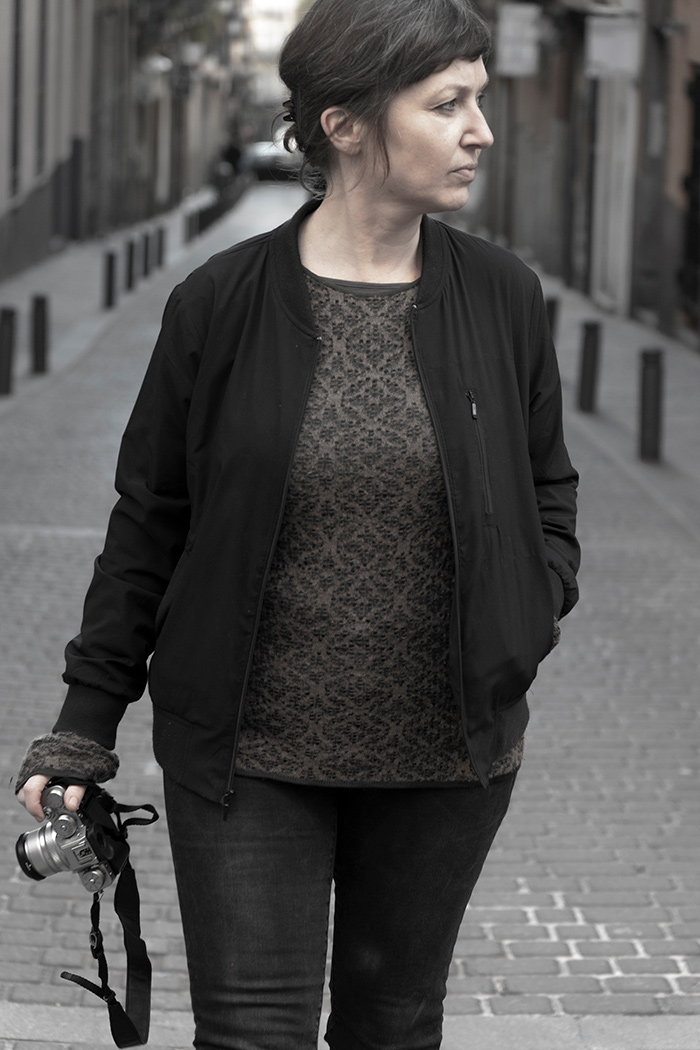Artists

BARBARA FALENDER
Polish sculptor, photographer, performer. She was born in 1947 in Wrocław and graduated from the Faculty of Sculpture at the Academy of Fine Arts in Warsaw in the studio of Prof. Jerzy Jarnuszkiewicz.
Falender often distanced herself from feminism typically understood as a set of political practices. Still, her works are a significant voice in the artistic statements of the 20th century, drawing on women’s experiences and perspectives. Her perception of eroticism and love has never been judgmental or exclusive. She is a pioneer in showing the male full nude.
Barbara Falender is an iconic example of an artist acting under the influence of rapture, an impulse that she has consistently transferred into the sphere of art over the years. Emotions resulting from her personal life – sex, love, birth of children and death of loved ones – were reflected in subsequent sculptures. In her case, separating life from creativity is practically impossible: all elements are intertwined and result from each other. However, some of them repeat over the years. It is a fascination with human corporeality, exposing the eruption of desire and sexual fulfilment, surprise with the surrounding reality and examining the processes of disappearance.
Zofia Rojek, Ciało. O sztuce Barbary Falender, text from the catalogue for the exhibition in Galeria Opera in Warsaw, 2020, p. 11
In her work, she combines experiments on the female and male nude during the sexual revolution with the great classical tradition dating back to antiquity. She is a master of sensual and idealistic sculpture in the most challenging and valuable material – marble.
Prof. Paweł Leszkowicz, Przez dotyk, curatorial text in the catalogue for an exhibition at CSK in Lublin, 2023, p. 13

ALEKSANDRA KARPOWICZ
Aleksandra Karpowicz is an award-winning artist primarily working in video, photography and performance. Born in communist Poland and currently living and working in London, her practice is based on critical research and personal life experiences.
In her art, she explores themes of relationship to body, psychology, sexuality, and identity and how those aspects of human nature are expressed and oppressed in our society and politics.
A great diversity of over 600 people from a range of social backgrounds, genders, sexualities, and ages appear in her work. She sees her art as an empowering platform of expression for herself and the communities she works with.
Her most recent work is a series of videos exploring human physicality and sexuality, liberation of the body and identity that culminate in the concept of a New Human Identity.

LIA DOSTLIEVA
Lia Dostlieva (b 1984, Donetsk, Ukraine) is an artist, cultural anthropologist and essayist with a degree in cultural anthropology. Her art and research practice engaged with the issues of collective trauma, decolonial stories seen through multispecies entanglements, and agency and visibility of vulnerable groups.
Lia was a participating artist in the National Pavilion of Ukraine at the 60th La Biennale di Venezia. She exhibited her works at the Kunstinstituut Melly (Rotterdam, the Netherlands), Kolumba Museum (Cologne, Germany), Ludwig Museum (Budapest, Hungary), National Gallery of Art (Vilnius, Lithuania), Tbilisi Photography and Multimedia Museum (Tbilisi, Sakartvelo), National Museum of Fine Arts (Bishkek, Kyrgyzstan), Latvian National Museum of Art (Riga, Latvia), etc.
Curatorial projects: 10th Triennale of Young Polish Art (Centre of Polish Sculpture in Orońsko, Poland, 2023), ‘Reconstruction of Memory’ (DOX, Prague, Czech Republic, 2017; IZOLYATSIA, Kyiv, Ukraine 2016). 2024 CEC ArtsLink International Fellow, 2022/23 Jan van Eyck Academie resident (Maastricht, Netherlands), 2019 Visiting Fellow of the Institute for Human Sciences (Vienna, Austria). She also writes for e-flux Journal, Eurozine magazine, Kajet Journal, Blok Magazine, etc.

IDA KARKOSZKA
Ida Karkoszka (1985) is a Polish artist who grew up in an artistic environment, but her early interests revolved around the natural sciences. She saw herself not so much in the arts as in veterinary medicine or surgery, professions that make a real difference in saving lives. Although she eventually graduated from the Department of Sculpture at the Academy of Fine Arts in Warsaw in the studio of Professor Antoni Janusz Pastwa, her early intuitions defined her later artistic choices influenced by the corporeal – vital subject matter of her works – and determined her perception of the artist’s place and tasks in the world as a public speaker, fighting injustice and striving through art to change destructive attitudes and practices.
Ida Karkoszka draws on the tradition of European representational art. Ida Karkoszka’s sculptures evoke the silhouettes of animals used by the artist to combat mass phenomena at the intersection of power and systemic violence that primarily affect innocent victims. The artist is seen as an animal advocate and ally, as most of her works were included in the fight against bestiality justified by cultural norms. Ida Karkoszka’s works have been shown at the Museum of Modern Art in Warsaw and the Center for Polish Sculpture in Orońsko, among others. The artist has participated in group exhibitions at Studio Cannaregio in Venice and the Mark Rothko Centre in Daugavpils. Her works are in the collection of the British Museum and private collections.

IZA JAGIEŁŁO
Izabella Jagiello (Warsaw, 1973) lives and works in Madrid, Spain. She received her MFA from the Academy of Fine Arts in Warsaw, Poland, and completed her studies in art at Sheffield Hallam University, United Kingdom, and the Universidad Veracruzana de Jalapa, Mexico.
In her practice, she analyses and combines the individual’s inner landscape with the outer landscape. Her works are exercises of imagination for a confluence between the world of nature and the human condition, investigating the contacts and boundaries between psychological, anthropological and biological phenomena. To this end, she often provokes and documents unusual situations in everyday life in collaboration with other artists and accomplices. Her investigations highlight the critical role of imagination in the construction of knowledge and the relativity of knowledge. In her installations and interventions in spaces, she uses photography and video, drawing and sculpture, living matter and found objects.
She has had solo exhibitions at the MPZ National Gallery Zacheta, Warsaw, Poland; Ujazdowski Castle Centre for Contemporary Art, Warsaw, Poland; MUA Museum of the University of Alicante, Spain; SEA, Santa Bárbara Castle Art Centre, Alicante, Spain; pazYcomedias Gallery, Valencia, Spain; Joan Guaita Gallery, Palma de Mallorca, Spain; AP Gallery, Jalapa, Mexico, among others. She participated in group exhibitions at CAPC Museum of Contemporary Art, Bordeaux, France; MSN Museum of Modern Art in Warsaw; IVAM The Institut Valencià d’Art Modern, Valencia, Spain; Aural Gallery, Alicante, Spain; Change and Partner Gallery, Rome, Italy; Francis Naranjo Foundation, Las Palmas de Gran Canaria, Spain.

